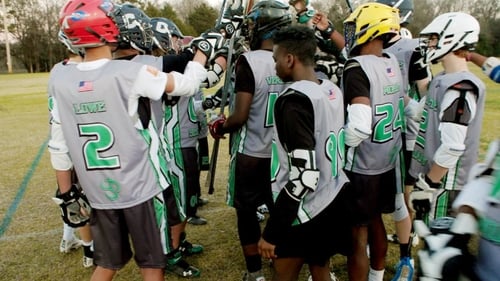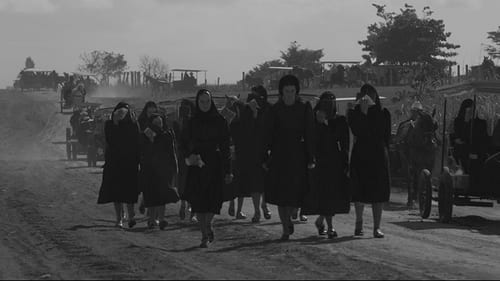Hermógenes Cayo (Imaginero) (1969)
Género : Documental
Tiempo de ejecución : 1H 8M
Director : Jorge Prelorán
Sinopsis
La película es sobre la vida y las actividades de Hermógenes Cayo, un artesano de la Puna jujeña que se desempeñó toda su vida como santero y telero donde pintaba retratos con temperas o tallaba imágenes religiosas en madera, así como el medio en el que vivía. Cayo falleció un año antes del estreno del filme en 1968 y en marzo de 2006 sus obras (70 piezas) luego de ser restauradas por la Fundación Antorchas fueron exhibidas en museos.

On the island of Tanna, a part of Vanuatu, an archipelago in Melanesia, strange rites are enacted and time passes slowly while the inhabitants await the return of the mysterious John.

En Muxía, costa da morte gallega, los percebeiros se juegan la vida día a día en acantilados e islotes, buscando el preciado marisco con el que sobrevivir. En Navidad es donde alcanzan la mitad de sus ingresos anuales, teniendo que enfrentarse a un mar tremendamente peligroso. Un trabajo de personas que viven al límite, tanto económico, como vital. Un reflejo actual de la relación entre el hombre y el mar, el hombre y su entorno. Años después del hundimiento del Prestige, se muestra un reflejo de personas que viven al limite, en constante adaptación al peligro, tanto económico, como vital.

A portrait of Santos Port, its geography, workers and the life that surrounds it, including the poor, prostitutes and the night life inhabitants.

With a dual motion a cruise ship and a fishing boat pass one another on the Nile and butlers in turbans set up a wooden gangway. Thanks to a rope and pulley system cows climb skywards then disappear into the hold of the sailing vessel. On the bank, black-haired women rock back and forth, bursting out laughing and showing the first signs of going into a state of trance. Never-before filmed gestures and faces of the people of the Nile succeed one another, uprooted to an unknown, magical world. The Banks of the Nile is one of the first experiments of film in colour that uses the Kinemacolor process.

A documentary that invites us to discover the strange path led by the explorer-ethnographer Marquis de Wavrin who, in the 1920s and 1930s, made ethnographic films in several countries of Latin America.

At a 2005 Carnival night, something mysterious happens at Porto Formoso bay, leaving the fishing boats wrecked. Fishermen decide to build bigger boats, but at the small village harbor it is impossible to deck them. They demand the construction of a new harbor, but many inhabitants are opposed due to a Castle ruins that lay there. If to some residents ruins look worthless, for others they are the village soul and future, as a lot of tourists would like to visit them...While the landscape transforms, we follow the Director voice through the story of the last seven years of this community.

Between Africa and the catalonian Penedés stands the distance of a videocamera. A cut. What is what, where are we, where did the songs we sang while we worked go, where is the group, the colective, the community?

Un tuareg sentado habla a cámara para explicar el exterminio de su pueblo rebelde. Con la cara oculta y vestido de azul, indica cómo debe grabarse su testimonio: sin su imagen, sin su voz. A partir de ese momento, los subtítulos muestran sus argumentos. La memoria histórica tuareg se transmite oralmente y se transcribe en la pantalla explorando momentos de la vida cotidiana y festividades originarias de este pueblo del desierto. Un documento mudo, pero con música, sobre la comunidad tuareg. Un pueblo ignorado por los medios de comunicación que está siendo sistemáticamente masacrado por el ejército de su país. De espacio abierto, el desierto ha pasado a ser su cárcel.

A sensory record of the relationships of affinity and enmity with fire in the conservation of the Cerrado biome.
In the company of local residents hired to act as brigadiers and, more recently, as management agents, the short film explores the affections established with fire in the midst of combat pyrophobias and management pyrophilias.
In addition to documenting fire fighting and manipulation techniques, the cinematographic experiment points to a more than human visual anthropology, where environmental forces such as heat, vegetation and wind make up an alterity whose condition remains ambiguous.

Two first-time filmmakers stop their lives to find out why rhinos are being killed for their horns. Carving out six months for the project, the women quickly find themselves immersed in a world far larger and more dangerous than they had imagined, only emerging from their odyssey four years later.

Point Blank is an investigative documentary on police violence and corruption perpetrated in Rio de Janeiro in the past 20 years. It vividly portrays the most emblematic incidents that occurred during this period through the perspective of family members, witnesses, survivors, and other people who were directly involved in such cases. The film starts with the notorious Vigario Geral Massacre of 1993 and culminates with the executions ordered and carried out by law enforcement agents in 2012 and 2013. These brutal facts are presented based on witness reports that reconstruct the memory of the few who survived the slaughters.

Despite never having played the game before, a group of underprivileged teens emerge as a talented lacrosse team under the tutelage of Coach Bobby Selkin.

The very first documentary about Jane Elliott's educational experiment about discrimination, which was originally produced for ABC News, in which she conducts an unforgettable lesson with her third-grade class in Riceville, Iowa.

In Sutarkhali, a small village on the Bangladeshi coast, a family, having suffered from the endless floods and storms, tries to rebuild its life.

A documentary about the eponymous Puerto Rican boxer

Romania, 1986: Gregor and Vali want to get away. Both need each other, yet there is mutual distrust. One night Gregor finds his doubts confirmed. In the end only hope is left.

The "Field of Magic" is a docu-poem about people living for over two decades in the Buda forest, near the closed down Kariotiskes dump in Lithuania. After four years of work, this film captures the perspective of the dump dwellers. It tells the story about the dissolving community, its uniqueness, daily routine, specific way of life, every-day joys and sorrows.

La desazón suprema: retrato incesante de Fernando Vallejo es un documental sobre el escritor colombiano Fernando Vallejo. Siguiendo una estructura literaria y una intensa intertextualidad con obras de Vallejo y otros escritores, el documental consta de un prólogo con epígrafe y nueve capítulos alrededor de diferentes episodios de la vida del escritor.

Mariquilla, la gitana más linda de Granada, anda en amores con Lucas, soldado de la guarnición de La Alhambra. Pero el tío Pichón, padre de Mariquilla, quiere casarla con don Cosme, viejo y rico escribano al servicio del Corregidor de la ciudad. Para escapar del compromiso, la gitana utilizará al gobernador, también viejo pero un caballero.

A man with no illusions marries a young woman who is brimming with idealism. She attempts to remake her husband with her overflowing optimism, but the marriage is severely strained when her first pregnancy ends in miscarriage. They separate, and the woman has a number of affairs, but eventually she returns to her husband. They have a daughter, then settle down to a life that is a blend of the husband's worldliness and the wife's idealism.

Lunch Break features 42 workers as they take their midday break in a corridor stretching nearly the entire shipyard.

This documentary chronicles the life of expatriate writer Paul Bowles through archival footage, photos and interviews with the author, who talks about his writing, his friendships with artists such as Tennessee Williams and Aaron Copland and more. Shot in Tangier, Morocco (Bowles's longtime home), this revealing portrait sketches out Bowles's rebellious life story, including his love relationships with men and women, his drug use and his music. - Paul Bowles, Edouard Roditi, Allen Ginsberg

For generations, the Salamanca community of Mennonites has been living in the same modest and rigidly organized way. Modern-day scenes are accompanied by a voice-over narrating a man’s recollections of his youth. “As soon as I close my eyes,” he explains, “I go back to the past, to the moment when I made the choice that shaped my entire life.” Speaking in the Plautdietsch language, he talks calmly of the strong curiosity he felt as a young boy about the world beyond Salamanca and the Mennonite faith – a curiosity for which he paid dearly.

Hellion — "Shum bola", a film on the eponymous story of Gafur Gulyam about the adventures of a little boy, whose restless character makes him different people and life situations.

The third part of Euripides’ trilogy relates Orestes’ confrontation with the people of Argos after killing his mother Clytemnestra and her lover Aegisthus, and his struggle to defend himself and his heritage – with the support of his sister, Electra.

Documentary depicting what happened to the characters in the film Terra para Rose, made by the same director. Shows the life of some 1500 families of landless rural laborers who, for the first time in 1985, occupied an unproductive large landholding, the Annoni plantation in Rio Grande do Sul. After camping out for years in tents, facing down the police and negotiating with the government, the former landless laborers have managed to turn their dream into reality, and are now successful small farmers.

Inspired by the German folktale, Wilhelm, a file clerk, falls in love with a huntsman's daughter. In order to marry, Wilhelm must prove his worth as a hunter and gain her father's approval. Naive and desperate, he makes a deal with a devil named Pegleg.

In 1972, a Hollywood producer's swinging party takes a strange turn when an uninvited guest comes for more than sex and drugs.






